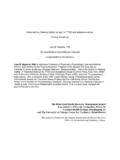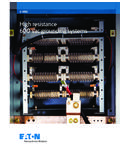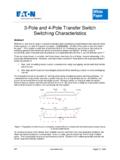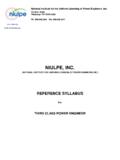Transcription of 2014 NEC Study Guide For “Grounding Separately …
1 2014 NEC Study Guide For grounding Separately Derived Systems (This Study Guide was prepared by Gaylord Poe) What is a Separately Derived System ? NEC Art. 100 defines a Separately Derived System as An electrical source, other than a service, having no direct connection(s) to circuit conductors of any other electrical source other than those established by grounding and bonding connections. Are all Generator & Transformer Installations Separately Derived Systems? For generator installations, the connections in the transfer switch determine if a generator is a Separately derived system.
2 (If the neutrals from the normal and the emergency and the load all tie together in the transfer switch the generator is not a Separately derived system.) For transformer installations, most premises wiring transformers that you encounter will be Separately derived systems. (The exception being a Y-Y transformer where the primary and secondary neutral conductors are tied together.) Determining whether or not an installation is a Separately derived system is extremely important so that proper and safe system grounding can be achieved.
3 For example, if a system is not Separately derived, a downstream connection of a circuit conductor to a grounding electrode system will have disastrous results. Separately derived systems require a separate grounding electrode conductor and non- Separately derived systems (generators and transformers with a direct neutral-to-neutral connection with the service) do not require a separate grounding electrode conductor because the neutrals are already connected to a grounding electrode system through the common neutral connection. grounding Separately Derived Systems The rules for establishing the grounding electrode system for a Separately derived system are very similar to the rules for the grounding of services.
4 Some of the applicable code sections are listed at the end of this section. Some of the similarities are: If there is a neutral* (a grounded system) it must be bonded and grounded. It must be connected to a grounding electrode system via a grounding electrode conductor. This connection can be upstream but not downstream of the system overcurrent device. A system having no neutral (an ungrounded system), must also be connected to a grounding electrode system in like manner. The grounding electrode conductor for either system must be sized in accordance with the size of the secondary conductors using the same table that is used for sizing grounding electrode conductors for service installations.
5 (*Note: Be sure and read (B)..you may have to ground a system even if you don t want to!) Some issues unique to Separately derived systems are: Using layman s terms, unlike grounding electrode systems for services, there is a pecking order of preferred electrodes. You must use the nearest one of the following a metal water pipe or building steel (Building steel must qualify as a grounding electrode.). It s important to note that the only portion of a metal water pipe that qualifies for use (in most cases) is the first 5 ft.
6 After it enters the building. What if there is no building steel and the metal water pipe enters the opposite end of the building? Can you just drive a ground rod? No. A ground rod can only be used when building steel and a metal water pipe are not available on the premises. Additionally, you must install bonding conductors to the metal water piping and other exposed structural metal in the area served by the Separately derived system. (B), (A), (A)(7), (B), (C).







